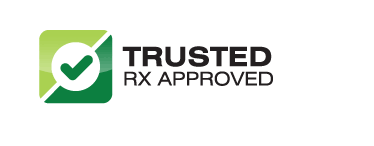Rivaroxaban tablets
What is this medicine?
RIVAROXABAN is an anticoagulant (blood thinner) that prevents the formation of blood clots.
Xarelto is used to prevent or treat a type of blood clot called deep vein thrombosis (DVT), which can lead to blood clots in the lungs (pulmonary embolism). A DVT can occur after certain types of surgery.
Xarelto is also used in people with atrial fibrillation (a heart rhythm disorder) to lower the risk of stroke caused by a blood clot.
Xarelto may also be used for purposes not listed in this medication guide.
Important information
You should not use Xarelto if you have an artificial heart valve, or if you have active or uncontrolled bleeding.
Xarelto can cause a very serious blood clot around your spinal cord if you undergo a spinal tap or receive spinal anesthesia (epidural), especially if you have a genetic spinal defect, if you have a spinal catheter in place, if you have a history of spinal surgery or repeated spinal taps, or if you are also using other drugs that can affect blood clotting. This type of blood clot can lead to long-term or permanent paralysis.
Get emergency medical help if you have symptoms of a spinal cord blood clot such as back pain, numbness or muscle weakness in your lower body, or loss of bladder or bowel control.
Do not stop taking Xarelto without first talking to your doctor. Stopping suddenly can increase your risk of blood clot or stroke.
Before taking this medicine
You should not use Xarelto if you are allergic to rivaroxaban, or if you have:
-
an artificial heart valve; or
-
active or uncontrolled bleeding.
Xarelto can cause a very serious blood clot around your spinal cord if you undergo a spinal tap or receive spinal anesthesia (epidural). This type of blood clot could cause long-term paralysis, and may be more likely to occur if you have:
-
you have a genetic spinal defect;
-
you have a spinal catheter in place;
-
you have a history of spinal surgery or repeated spinal taps;
-
you have recently had a spinal tap or epidural anesthesia;
-
you are taking an NSAID - Advil, Aleve, Motrin, and others; or
-
you are using other medicines to treat or prevent blood clots.
Xarelto may cause you to bleed more easily, especially if you have:
-
a bleeding disorder that is inherited or caused by disease;
-
hemorrhagic stroke;
-
uncontrolled high blood pressure;
-
stomach or intestinal bleeding or ulcer; or
-
if you take certain medicines such as aspirin, heparin, warfarin (Coumadin, Jantoven), or clopidogrel (Plavix).
To make sure you can safely take Xarelto, tell your doctor if you have kidney or liver disease.
FDA pregnancy category C. It is not known whether Xarelto will harm an unborn baby. However, this medicine could cause bleeding complications during childbirth. Tell your doctor if you are pregnant or plan to become pregnant while using this medication.
See also:
Pregnancy and breastfeeding warnings
It is not known whether rivaroxaban passes into breast milk or if it could harm a nursing baby. You should not breast-feed while you are using Xarelto.
How should I take rivaroxaban?
Take Xarelto exactly as prescribed by your doctor. Xarelto is taken either once per day or two times per day, depending on the reason you are using this medication. Follow all directions on your prescription label. Your doctor may occasionally change your dose to make sure you get the best results. Do not take this medicine in larger or smaller amounts or for longer than recommended.
For atrial fibrillation: Take the Xarelto 15-milligram or 20-milligram tablet with your evening meal.
For hip or knee replacement surgery: You may take the Xarelto 10-milligram tablet with or without food.
Tell your doctor if you have trouble swallowing a Xarelto tablet.
Tell any doctor who treats you that you are using Xarelto. If you need surgery or dental work, tell the surgeon or dentist ahead of time that you are using this medication. If you need anesthesia for a medical procedure or surgery, you may need to stop using this medicine for a short time.
Use Xarelto regularly to get the most benefit. Get your prescription refilled before you run out of medicine completely.
Do not change your dose or stop taking this medication without first talking to your doctor. Stopping suddenly can increase your risk of blood clot or stroke.
Store at room temperature away from moisture and heat.
What happens if I miss a dose?
If you take Xarelto 1 time each day: Take the missed dose as soon as you remember. Take your next dose the following day and stay on your once-daily schedule. Do not take extra medicine to make up the missed dose.
If you take Xarelto 2 times each day: Take the missed dose as soon as you remember. You may take 2 doses at the same time to make up a missed dose.
What happens if I overdose?
Seek emergency medical attention or call the Poison Help line at 1-800-222-1222.
Overdose may cause excessive bleeding.
What should I avoid?
Avoid activities that may increase your risk of bleeding or injury. Use extra care to prevent bleeding while shaving or brushing your teeth.
Xarelto side effects
Get emergency medical help if you have any of these signs of an allergic reaction to Xarelto: hives; difficult breathing; swelling of your face, lips, tongue, or throat.
Also seek emergency medical attention if you have symptoms of a spinal blood clot: back pain, numbness or muscle weakness in your lower body, or loss of bladder or bowel control.
Call your doctor at once if you have:
-
easy bruising or bleeding (nosebleeds, bleeding gums, heavy menstrual bleeding);
-
pain, swelling, or drainage from a wound or where a needle was injected in your skin;
-
bleeding from wounds or needle injections, any bleeding that will not stop;
-
headache, dizziness, weakness, feeling like you might pass out;
-
urine that looks red, pink, or brown; or
-
bloody or tarry stools, coughing up blood or vomit that looks like coffee grounds.
Common Xarelto side effects may include:
-
muscle pain;
-
itching; or
-
pain in your arms or legs.
This is not a complete list of side effects and others may occur. Call your doctor for medical advice about side effects. You may report side effects to FDA at 1-800-FDA-1088.
Xarelto dosing information
Usual Adult Dose of Xarelto for Deep Vein Thrombosis Prophylaxis after Hip Replacement Surgery:
Prevention of venous thromboembolism in patients undergoing hip or knee replacement surgery:
10 mg orally once a day starting 6 to 10 hours after surgery.
Duration of therapy is 35 days for hip replacement surgery and 12 days for knee replacement surgery.
Usual Adult Dose for Deep Vein Thrombosis Prophylaxis after Knee Replacement Surgery:
Prevention of venous thromboembolism in patients undergoing hip or knee replacement surgery:
10 mg orally once a day starting 6 to 10 hours after surgery.
Duration of therapy is 35 days for hip replacement surgery and 12 days for knee replacement surgery.
Usual Adult Dose for Atrial Fibrillation:
Nonvalvular Atrial Fibrillation:
20 mg orally, once daily with the evening meal.
Usual Adult Dose of Xarelto for Deep Vein Thrombosis:
Treatment of DVT and PE:
Initial dose: 15 mg orally twice daily with food, for first 21 days.
Maintenance dose: 20 mg orally once daily with food, for remaining treatment.
Usual Adult Dose for Pulmonary Embolism:
Treatment of DVT and PE:
Initial dose: 15 mg orally twice daily with food, for first 21 days.
Maintenance dose: 20 mg orally once daily with food, for remaining treatment.
Usual Adult Dose for Deep Vein Thrombosis -- Recurrent Event:
Reduction in the Risk of Recurrence of DVT and of PE:
20 mg orally once daily with food.
Usual Adult Dose of Xarelto for Pulmonary Embolism -- Recurrent Event:
Reduction in the Risk of Recurrence of DVT and of PE:
20 mg orally once daily with food.
What other drugs will affect Xarelto?
Tell your doctor about all medicines you use, and those you start or stop using during your treatment with Xarelto, especially:
-
rifampin;
-
St. John's wort;
-
antifungal medication--itraconazole or ketoconazole;
-
HIV medication--indinavir, lopinavir, ritonavir; or
-
seizure medication--carbamazepine, phenobarbital, phenytoin.
This list is not complete. Other drugs may interact with Xarelto, including prescription and over-the-counter medicines, vitamins, and herbal products. Not all possible interactions are listed in this medication guide.





